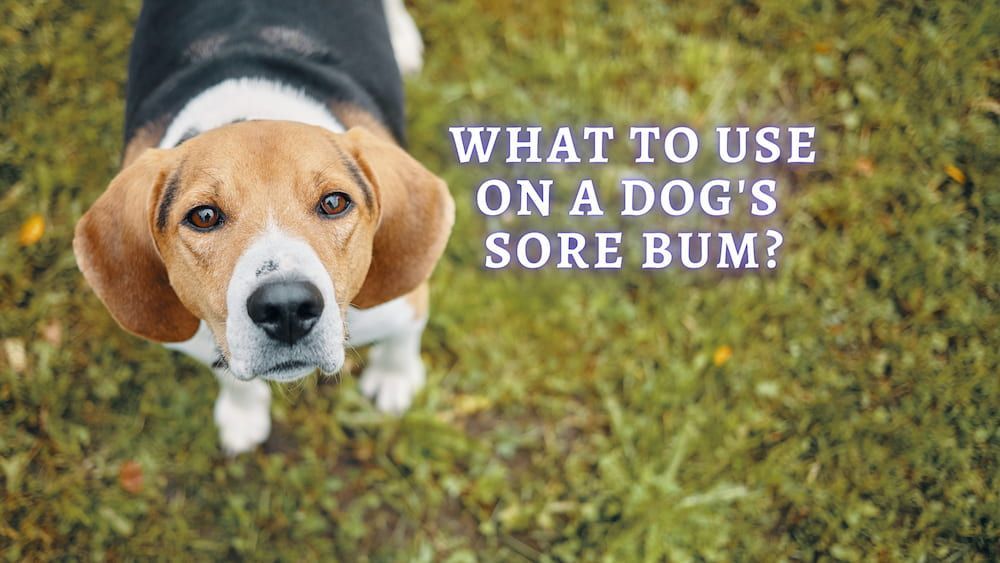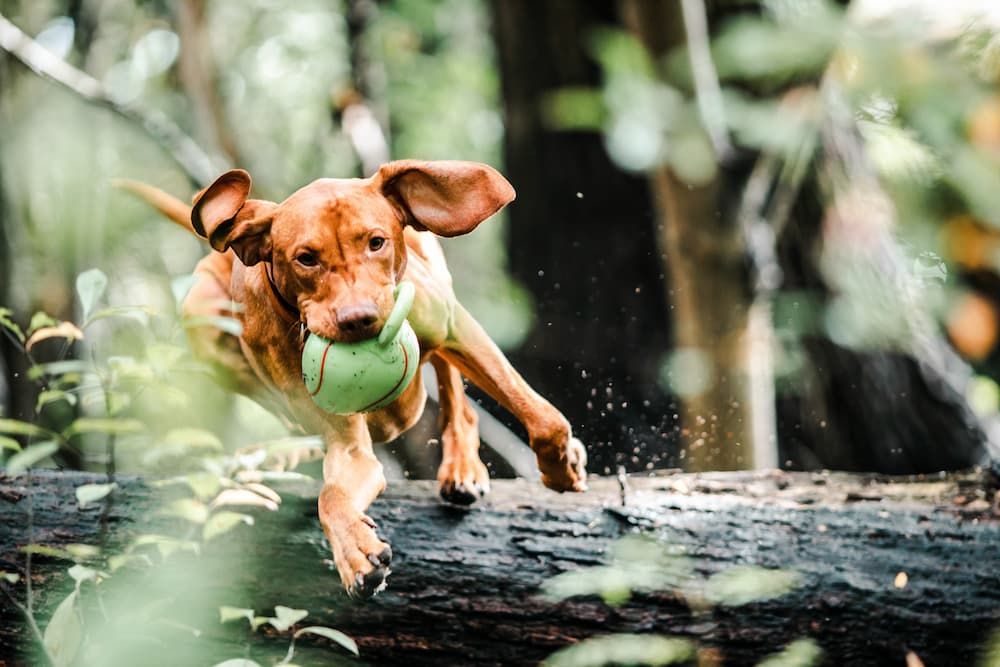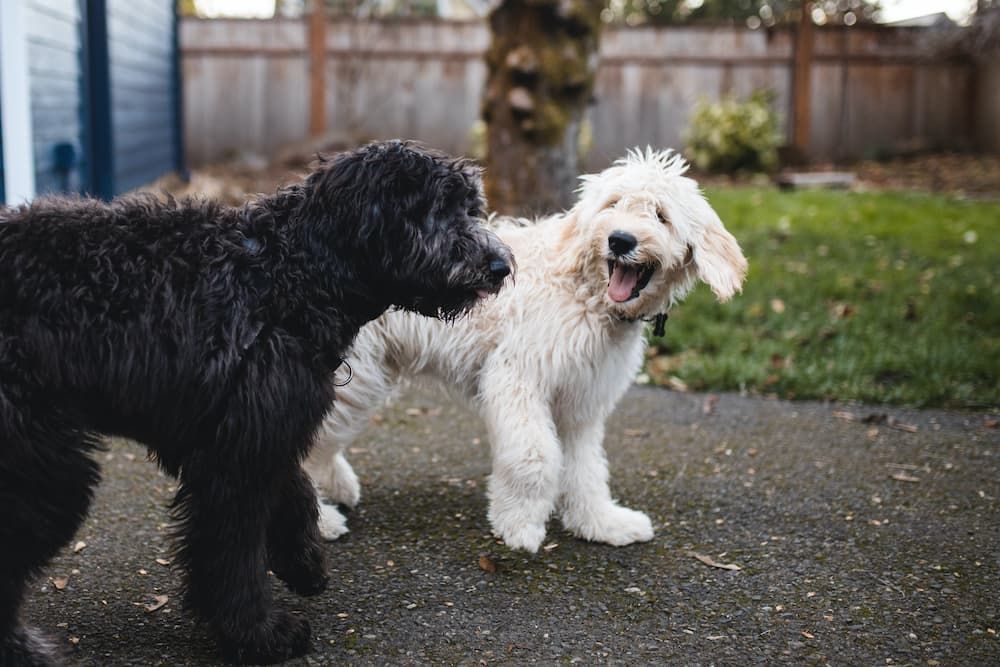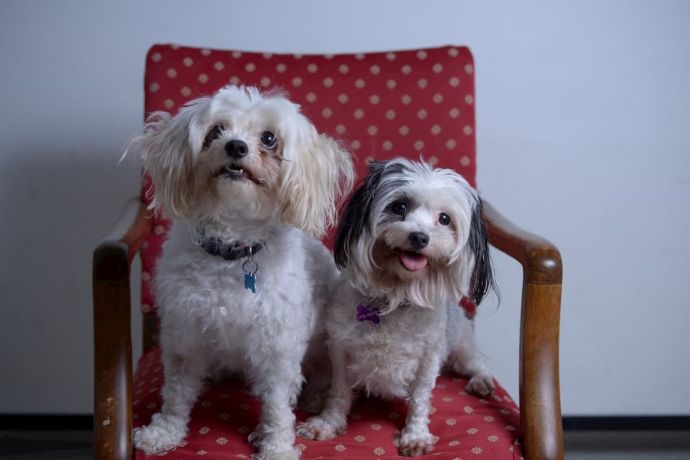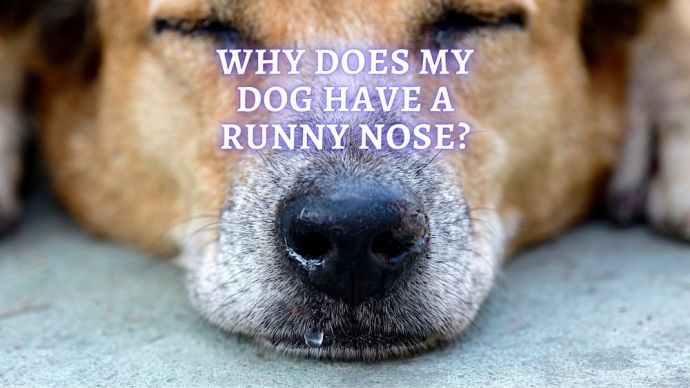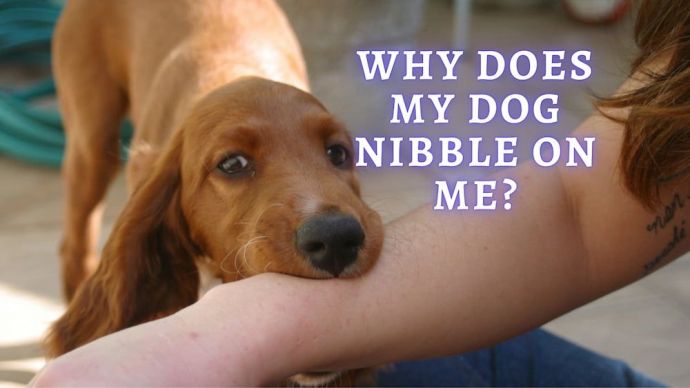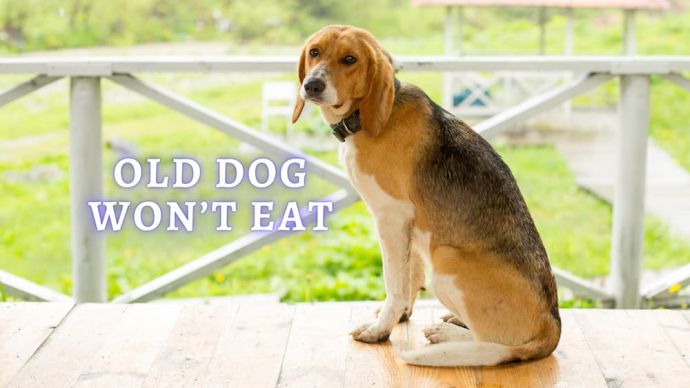My Dog Has a Sore Bum: What Can I Put on It?
Written by:
Author: Vicki Smirnova
Vicki Smirnova is a professional writer and editor who adores animals and helps readers get along well with their pets. She has been working in digital media for more than 5 years and has great experience writing content about lifestyle, including pets. Vicki specializes in dog health and nutrition, cat feeding, dog training. She is an aquarium lover and is passionate to write about fish care at home. Also, Vicki headed several websites and worked as a news editor.
View all 244 articlesLearn about our editorial process and veterinary review board.
Reviewed by:
Veterinary review
by Dr. Chyrle Bonk
Dr. Chyrle Bonk is an associate veterinarian since 2010 and was a volunteer for Clearwater County Youth 4H. Dr. Bonk contributed to various animal and veterinary related websites and magazines as a way to help keep animals across the globe safe and healthy. When Chyrle not working she spends her time with her own furry crew of dogs, cats, and horses.
View all 10 articlesLearn about our veterinary review board
Viewed: 79000
Updated on: 10/06/2023
Dogs scooting across the floor may seem funny to some. However, as a responsible dog parent, scooting should signal something is wrong.
Scooting usually indicates that your dog might have an anal sac issue.
The most common cause for scooting in dogs is impacted or inflamed anal glands. This causes discomfort and itchiness that can be partially relieved by a quick scoot across the carpet.
Dr. Chyrle Bonk
When your dog has an itchy bum, visiting the vet is always a good idea. This way, you can ensure that her itch is not due to a more serious illness or parasites.
However, sometimes you can’t reach the vet in time. Other times, you only want to soothe your puppy’s pain without leaving the house. So, we set up a guide on how to treat a sore bum on a dog, complete with solutions for what you can put on a puppy’s itchy bottom.
Read on to find out more about rectal itching in dogs and how you may treat it at home!
What kinds of bum problems do dogs get?
The pet can ride on the priest, itch, or whine because something irritates and worries him in the anus, perineum, or tail root. It can be dirt adhering to the coat, irritation after loose stools, or flea dermatitis. When you have examined the puppy and have not found an obvious reason for this behavior, contact the veterinary clinic. Causes of anal problems may include:
- Problems with the dog’s anal glands
- Vulva or vagina problems (in female dogs)
- Infections
- Rectal prolapse
- Diarrhea
- Allergic reactions
- Inflammation of the rectum
- Worms
- Prostate problems (in male dogs)
- Rectal wounds
- Tumors
- Skin fold dermatitis
- Rectal prolapse
Most often, the main reasons that the dog rides on the floor are problems with the perianal glands, post-grooming dermatitis, and poor hygiene. Less commonly, this behavior occurs due to injuries and neoplasms in the anus, skin fold dermatitis, insect bites, and redirected itching.
What Are the Signs of Sore Bottom in Dogs?
Rectal itching is common in dogs and may happen several times throughout your furry friend’s life. As a pet parent, it is impossible not to notice your dog scooting across floors, grass, or even the pavement. This behavior is a clear sign that your pooch feels pain or discomfort in that area.
Other signs of a sore bum in dogs include:
- Licking around the tail area.
- Biting and scratching the area around the anus.
- Often restlessness.
- Irritability.
- Lethargy and lack of appetite.
Sometimes, your dog may jump suddenly and look back at her rear end. This sudden shock can tell you a bit about the intensity of the itch. Simply put, anal itchiness may feel similar to an insect bite or tickle.
If your dog shows signs of a sore bottom very rarely and with at least five days in between, she might not have a serious problem. However, if her scooting and scratching is more frequent, you should ask your veterinarian.
In severe cases, anal sac infections can turn into ruptured anal glands or even anal sac tumors. Besides scooting, symptoms of an anal gland issue include:
- A foul odor.
- Constant diarrhea.
- Blood in the stool.
- An open wound around the anal area.
- Protrusion of anal tissue.
Furthermore, you may notice that your dog is constantly whining or crying. She might also experience severe pain when sitting. So, if you see her avoiding that position, you should investigate her bum area and contact your veterinarian.
Anal gland impaction and Infection in Dogs
Some pet owners believe that their dogs scoot across the floor because they have worms. However, the canine experts at the Washington State University College of Veterinary Medicine might disagree.[1] They believe that every canine, from wolves to Chihuahuas, experiences anal gland dysfunctions at some point in their lives.
To know how to soothe your dog’s sore bum, you first must understand the anal gland function in dogs. This way, you will avoid giving it the wrong treatment or mistaking the issue for something completely different, such as parasitic worms.
READ MORE: How Long Can a Dog Go Without Pooping?
READ MORE: How Many Times a Day Should a Dog Poop? (Vet Advice)
What Are Dog Anal Glands?
Every dog has small glands on both sides of its anus. Also known as exocrine glands, these organs have special ducts in which they secrete and hold fluid until the dog defecates. Firstly, they do not use the bloodstream as a natural secretion flow. Secondly, they have to empty the secretions on each defecation.
According to the American Kennel Club, the healthy consistency of dog poop [2] should be compact but moist. That is to say; the stool should be wet enough to slide out naturally. But, it should also be firm enough to compress the anal gland ducts in order to release their liquid.
A dog’s stool also contains secretions from the anal glands. Furthermore, they contain plenty of information about the pup’s diet, health, and whether it has a sore bottom or not. For example, that’s why your pup sniffs other hounds’ stools at the dog park. In a way, she is following a millennia-old natural habit of checking on the health of other members of her “pack.”
Your dog may get a sore butt when her anal glands do not empty during defecation. This unfortunate event is also known as anal gland impaction because the ducts become “impacted.” Subsequently, the glands inflate and look like red, swelling bulbs on each side of the anus.
Anal gland impaction in dogs occurs when the anal glands can’t be naturally expressed. This may be due to a thickened secretion that can’t pass through the tiny gland ducts. Or it may be due to inflammation or blockage of the duct or duct opening itself that doesn’t allow for the passage of the anal gland secretions.
Dr. Chyrle Bonk
You may notice an overwhelming smell coming from your dog’s anus when her anal glands become impacted. For example, the odor is similar to rotten fish, and it is impossible to ignore.
How to Treat Anal Gland Infection in Dogs?
Anal gland impaction can lead to severe infections if you don’t tend to it in time. The anal glands may abscess and even rupture, leading to open, bloody wounds around the anus. Ruptured anal glands may require a surgical repair if severe enough.
At this point, a soothing cream wouldn’t do much to heal the impacted glands. Instead, you can manually express the dog’s anal glands to help squeeze the liquid out of them. Having the anal glands expressed should relieve the itch. However, this procedure is not guaranteed to work, and by doing it wrong, you may cause severe inflammation.
Most pet parents do not feel comfortable with expressing their dog’s anal glands. Instead, you can discuss the problem with your vet. In some cases, the vet will recommend antibiotics. Other times, you may find that natural remedies for itchy bottoms in dogs can be reliable solutions.
Anal Sac Risk Factors
According to PetMD, [3] dogs of all breeds can experience anal gland issues. However, large breeds are less likely to develop this condition. So, if you have a small breed dog, you need to monitor them regularly to reduce the risk of an itchy rear end.
The dog breeds most likely to develop anal gland impaction include:
- Basset Hounds.
- Beagles.
- Chihuahuas.
- Cocker Spaniels.
- Lhasa Apsos.
- Miniature and Toy Poodles (but not Standard Poodles).
Note that both female and male dogs have equal risks of experiencing a sore, itchy butt. But, dogs who suffer from other skin infections or hypothyroidism are more likely to develop anal gland impaction, regardless of their breed or gender.
Dogs can suffer from a sore bottom at any age. One of the risk factors is obesity. Overweight pups are more prone to a wide range of canine health problems, and anal gland impaction is one of them.
RELATED: How Often to Express Dog Anal Glands?
How to Prevent Your Dog from Having an Itchy But
To better understand how to protect your dog from anal gland issues, we should take a closer look at what causes your puppy to have a sore bottom:
- The anal sacs might be full and impacted or infected.
- Allergies to food or fleas.
- Constipation.
- Bacterial infections.
- Rectal tumors.
- Ulcers and cracks in the skin around the anus.
- Skin infections and irritations.
- Tapeworms or ringworms.
- Skin cuts from grooming.
As you can see, you can control some of these factors. For instance, you can ensure that you feed your dog a fiber-rich diet. This way, her stools will have the ideal consistency that prevents anal sacs from becoming impacted. Secondly, you can keep her free of fleas, and make sure that grooming takes place without any cuts or clips around the anal area.
You should ensure that your pup is always comfortable defecating. For example, you should avoid making her feel extra stressed when you go for the daily walk. Do not scare or rush her when she is ready to pass her stool. Also, guide her to a remote area of the park, where she feels safe and secure.
Finally, you can prevent your dog from getting an itching butt by helping her keep a trim figure. If your dog has an appropriate weight for her breed and size, she will be less likely to develop anal gland impaction. However, if she is fat, you should put her on a diet and challenge her to more exercise.
Natural Treatment for Itchy Bums in Dogs
If you see your dog scooting frequently, you should consider immediate action. Without knowing what causes her an itchy bottom, you may apply the wrong treatment. Furthermore, you risk making a mild condition worse.
Lift up her tail and inspect the area. If it looks red and pulsating, you might be dealing with an infection. Next, gently touch the area around the anus. If it is hard, the anal sacs might be full. As we mentioned above, you can try squeezing them yourself. However, if you do not have experience in this matter or you feel uncomfortable doing it, you should head to the vet.
After a careful examination, the vet may suggest oral medicine or ointments that you can put on your dog’s itching butt. As a result, your pup will get pain relief and again feel comfortable defecating.
READ MORE: Dog Licks Pus
Home Remedies for A Dog’s Sore Bottom
If your pooch sore bum is in the early stages of anal gland impaction, you can try to treat the problem at home. Try these easy methods for reducing the risk of anal sacs infection:
- Increase fiber intake. Add fish oil and more fiber-rich ingredients to your dog’s daily food intake. For example, boiled carrots and pumpkin can improve the quality of her meals. Fiber will enhance the defecation rate and force your dog to pass stools more often. Therefore, her anal sacs will empty more frequently. Keep in mind that this method works only if you increase the fiber in your dog’s food gradually. If you add too much fiber at once, she might have an upset stomach or become constipated. As a result, the extra fiber might do more harm than good.
- Increase water intake. With the increase in fiber, you should also consider giving your dog more water every day. Dehydration can lead to constipation and other difficulties defecating and thoroughly expressing their anal glands.
- Use a warm compress. A dog’s anal sac can sometimes be expressed with the help of a warm compress. Soak a clean cloth in warm water and have your furry friend sit on it for roughly 10 minutes. Use gentle force to keep her in place. After that warm relief, your pup may find it easier to relax and empty the anal gland ducts on the next stool.
- More exercise. Two things happen every time your dog exercises. Firstly, her digestion works faster, which makes her defecate more often. Secondly, her muscles tighten. As a result, she will assert more pressure on the anal sac to empty every time she passes a stool.
RELATED ARTICLE: Best Interactive Dog Toys
What Cream Can I Put on My Dogs Sore Bum?
You can use ointments to treat your dog. But keep in mind that any ointment applied to a wound will often be licked by your pet. You need to prevent this because it can harm your pet.
- Vaseline – If during defecation, the animal is very anxious, it cannot empty itself, but at the same time, stool masses are felt in the rectum, then you can help as follows: Administer vaseline oil rectally.
- Germolene – It’s an antiseptic cream. It contains Chlorhexidine Digluconate and Phenol as active ingredients. You can use this to treat inflammation in a dog.
- Savlon – Savlon antiseptic cream is not intended for an animal’s anal gland health. Veterinarians will be able to recommend a different antiseptic cream or ointment.
- E45 cream – E45 products are intended to treat skin conditions in humans, so it is not recommended to use any E45 products on dogs.
- Polysporin – It is not recommended to use this ointment for anal gland health. The veterinarian may prescribe other medicated creams or antibiotics depending on the severity of the condition.
- Bepanthen – This ointment contains an antibiotic. People commonly use it to treat minor cuts or anal sac disease. It can be used to treat dogs.
- Sudocrem – It can be used in small amounts on dogs’ anal gland problems. Sudocrem contains zinc oxide.
FAQ
Below are vet-approved answers to pet owners whose pups have an itching butt, anal gland impaction, or an irritated bottom from a variety of causes!
What cream can I put on my dog’s sore bum?
Upon your veterinarian’s recommendation, you can use an anti-inflammatory cream or ointment to alleviate anal discomfort in dogs. Make sure that the treatment contains plant extracts, like Witch Hazel, which provides pain relief for anal gland infections.
How do you treat a sore butt on a dog?
An instant solution to treat a dog’s sore butt does not exist. The main treatment for a sore bottom is to find the cause behind it.
Depending on what causes your dog an itching bottom, you may have to change her diet, express her anal glands, treat her for worms or fleas, and apply creams and wet compresses to her bottom. Finally, she may even have to undergo surgery to resolve anal gland issues.
Why is my dog’s bum red and swollen?
Your dog’s bottom may become inflammed and swollen because of anal gland impaction. This condition occurs when the anal glands do not empty during defecation. As a result, the internal secretions inflate the anal sac, which may cause itchiness, tissue protrusion, and blood in the stool, among others.
Can I put Vaseline on my dog’s bum?
While Vaseline may have some anti-inflammatory properties, there is no proof that it can reduce inflammation in a dog’s anal sacs. Furthermore, you may find your dog licking it soon after you rub it on her rectum. It is always better to use medical remedies that the veterinarian has recommended.
What causes a sore bottom in dogs?
Every dog has two small glands just inside its anus. They secrete an internal fluid that comes out with the stool. However, when they fail to empty their secretions, these two glands swell up. As a result, the dog may feel discomfort and pain, which will cause her to scoot and lick or bite herself around the bottom area.
RELATED ARTICLE: How to Give Medicine to a Dog?
Final Notes
Your dog may experience an itchy bum at any point in her life. There are plenty of ways to prevent it by ensuring that she has a fiber-rich diet and enough exercise. However, when it finally happens, you should take immediate action. If the situation is not severe, you can try to relieve the pain at home. If the anal glands are already swollen, you should visit the vet.
Article Sources:
- Hoggan, Sarah. “Anal Sac Disease.” VetMed, vetmed.wsu.edu/outreach/Pet-Health-Topics/categories/diseases/anal-sac-disease.
- Donovan, Liz. “How to Tell If Your Dog’s Poop Is Healthy – American Kennel Club.” American Kennel Club, 17 Sept. 2020, akc.org/expert-advice/health/dogs-poop-says-health/.
- Dunn, T. J. Anal Gland Problems in Dogs (and Cats). 15 Feb. 2021, petmd.com/dog/general-health/evr_dg_anal_sac_problems.
 Dog Care My Dog Keeps Scratching His Mouth: Reasons Why Your Dog Scratching Face
Dog Care My Dog Keeps Scratching His Mouth: Reasons Why Your Dog Scratching Face - 17561
- 1
 Dog Veterinary Tips Why is my Dog throwing up: Causes and Preventing (Veterinary Advice)
Dog Veterinary Tips Why is my Dog throwing up: Causes and Preventing (Veterinary Advice) - 23424
- 5
 Dog Care Why Is My Dog Bleeding From Its Butt? Causes and treatment of rectal bleeding in the dog
Dog Care Why Is My Dog Bleeding From Its Butt? Causes and treatment of rectal bleeding in the dog - 22076
- 0
 Dog Care My Dog Keeps Scratching His Mouth: Reasons Why Your Dog Scratching Face
Dog Care My Dog Keeps Scratching His Mouth: Reasons Why Your Dog Scratching Face - 17561
- 1









